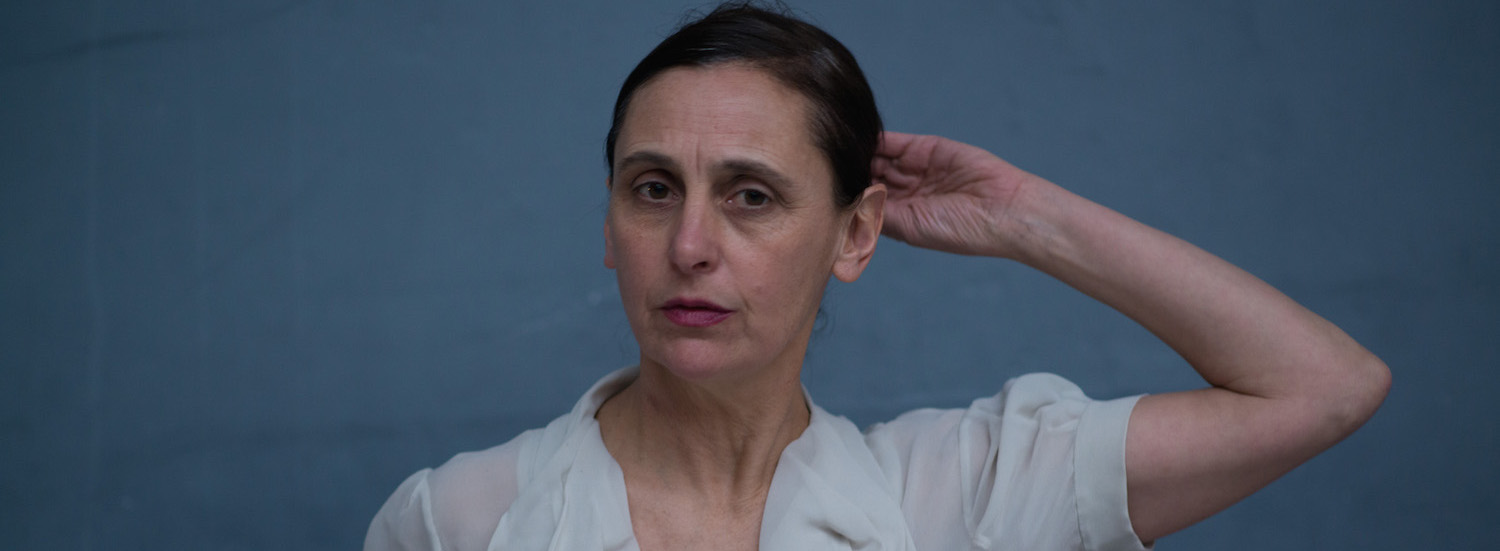As part of Sydney Festival 2016, Anne Teresa de Keersmaeker, a world-renowned Belgian choreographer and dancer, was in Sydney with her contemporary dance company, Rosas. First stop, the Sydney Opera House with De Keersmaeker’s celebrated work Fase. This work was first performed in 1982 and is considered a seminal work in the history of contemporary dance. It is also a work in which De Keersmaeker herself still performs…35 years after its premiere.
After the Opera House, the company moved to Carriageworks to present an Australian exclusive work – Vortex Temporum – an interaction between dancers and musicians.
On January 12, De Keersmaeker joined Erin Brannigan, University Lecturer and Writer, for an Artist Talk at Carriageworks. Here are excerpts of their conversation.
Exploring Choreography
“What is choreography? Organising movements in time and space, organising geometrical space. For example, in the first section of Fase, we use a rigorous, mathematical framework – dancing in circles – the most basic geometric shape.”
But how does the choreographic process start?
“It always starts from very simple things. Then, step by step, layer upon layer, it is a slow process of building the work. In some works it’s not about virtuosity; the focus is more on the idea of constantly combining space and time.
I love Pythagoras and his theories; it can embody the most abstract ideas. This relationship between theory and practise – the starting point is thoughts…and then the search for movement with the dancers, finding a unifying principal. Socially, it’s a very intense process.”

Anne Teresa De Keersmaeker. Photo by Anne Van Aerschot.
Exploring Fase
“For many years, I had been thinking that I should take time for time – this notion of duration. I found this notion embedded in Steve Reich’s music. This music does not give an immediate invitation to dance, but rather it presents a challenge to dance.
The third phase of Fase is where the two dancers are seated on high stools – they are working within a nine-point square with only the torso and arms ‘dancing’. The movements start from a small vortex at the base of the spine, and it’s all based on mathematical formulations. In summary, Fase is a combination of extreme simplicity and mathematical complexity.
I was 21 years old when I created Fase in 1982, and I didn’t expect to be dancing it 35 years later. If I’d known I would still be dancing it today, I would have created it differently! The last piece is a real pain in the arse!”
How has Fase developed and changed over 35 years ?
“It hasn’t changed. The writing hasn’t changed, the lighting is the same. I have only had two partners over those 35 years. My original accomplice in Fase was Michèle Anne de Mey, who danced with me for 10 years before my current partner, Tale Dolven.
Fase uses extremely minimal lighting, which defines the geometry. Everything within Fase is simple but harmonious. It is a very specific work which can be transferred.”
Why do you think Fase is described as a seminal work in the history of contemporary dance?
“I created Fase in 1982, the period of American minimalism, which was generally always connected to the notion of coldness and distance with no narrative. But Fase didn’t fit this mould. Fase is very abstract with a high degree of formality, that’s true. But the difference lies in Fase’s extreme physical intensity with a kind of emotion embedded in that physicality, which at the time was distinctly different.
Within the violent movements, there is an unspoken dialogue, but this is combined with a mathematical precision, emblematic of that period.”
On aging
“I take dance seriously…it can embody the most abstract ideas. For me, in order to continue dancing at my age, I have to take dance seriously. It demands a physical discipline. I follow a strict vegetarian regime…it’s the only way I can continue with the physical demands placed on my body.
Age is interesting. With age comes craftsmanship, but one loses one’s virginity, that impulsive streak, those intuitive decisions that come with youth, and you start to rely more on experience, skills and an accumulation of knowledge.”

Anne Teresa De Keersmaeker. Photo by Anne Van Aerschot.
On the difference between live and filmed performance
“Live performance is ephemeral, with the performance being a specific moment in time. To see a live performance is something special. You can watch a recording of that same performance, but the public will see something completely different, particularly in relation to space.
With film, the space is extremely static and condensed, and it can come as a shock to see the same piece live, to be confronted with something bigger than expected.
I realise that Youtube is now the largest dance library available. This changes a person’s response to live performance. I remember when we performed before a group of students who had never been to a live performance. They had only ever watched films or videos.
At the end of our performance, there was no applause; it was quiet and the students left. We were a bit surprised but realised that they didn’t understand the code – they had had no exposure to the cultural environment of a live performance.”
On dance: Ancient wisdom and modern technology
“I’m very interested in eastern philosophies – Taoism, for example. Fase was inspired by this eastern approach.
The world we live in now allows us to combine ancient wisdom with modern technology…it’s a perfect place for creativity.”
By Elizabeth Ashley of Dance Informa.
Photo (top): Anne Teresa De Keersmaeker. Photo by Anne Van Aerschot.

















